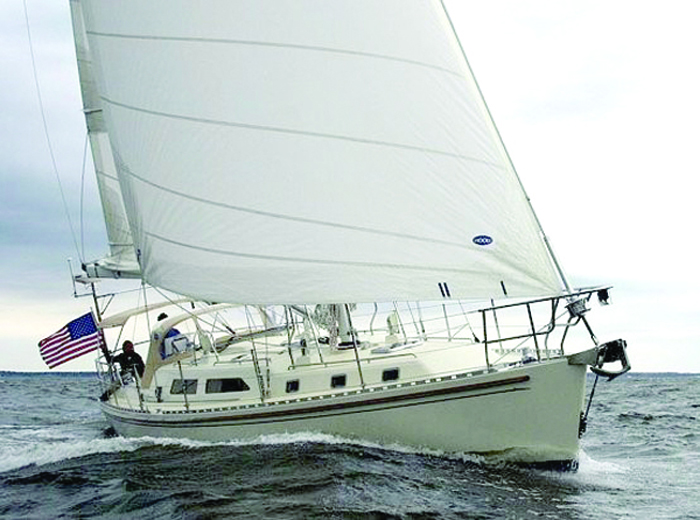Used Boat Review: Outbound 46, a quality, heavy displacement bluewater cruiser
During my career in the marine industry I have had the opportunity to work on, sail on, and inspect many cruising boats of various descriptions. One boat that had alluded me until recently was the Outbound 46.

Outbound Yachts was started in 1997 by Phil Lambert with the first hull delivered to the United States in June of 1999. Initially known as the Outbound 44, in 2002 the stern was extended two feet thus creating the Outbound 46. Although technically still an option, the popularity of the addition seems to have redefined it as the Outbound 46. With the exception of the two-foot addition, the 46 and the 44 are essentially the same boat.
The vessel was designed by the late Carl Schumacher, designer of the popular Alerion Express series, the Express 37 and two Oyster Lightwaves. The vessel is built in Mainland China by Hanshen Yacht Building Company, also a builder for Passport Yachts, another quality boat builder. The Outbound and Passport are proof that quality boats can indeed be successfully built in mainland China.
After the success of the 46-footer, 52- and 56-foot versions of the Outbound were commissioned. The 52 was designed by Tim Kernan; the 56 was designed by German Frers. The 46 is the only boat in the series designed as an aft cockpit. Overall the fit and finish of the joinery and laminations are considered to be well above average, even in the out-of-site less traveled areas.
Cockpit: Not too wide, deep with a large single wheel with a large hard dodger to hide under and help buffer the outside environment’s effect on the vessel interior. Several images show traditional dodgers installed. The hard dodger may be an option or introduced on later models.
Interior: Quality joinery with ample natural light. The mast step drainage still needs some development.
Storage space: Large amounts of storage space, including one of the boat’s unique features: the “work room” or garage that is located aft of the head under the starboard side cockpit seat. The work room is large enough to accommodate a generous inventory of tools, spare parts, generator, extra refrigeration, water maker, and maybe even a washer/dryer combination unit.
Hull construction: It is made of solid fiberglass with the core used only in the deck and rudder. The keel design is innovative with lead ballast castings thru-bolted horizontally to each side of the bottom of the fiberglass keel. The lead is then encapsulated in fiberglass reinforced plastic (FRP) and integrated with the molded fiberglass keel sump. There are no interior keel bolts to leak, corrode, or retighten. One anomaly noted to this particular boat was a small area of elevated moisture in the bottom of the rudder, a little surprising for a two-year old boat. The deck is reported to be vacuum bagged and cored with Divinycell, a synthetic (non-organic) coring.
Tankage: Fuel (four) and water tanks are located under the saloon floor and made of fiberglass. Tanks are reported not be integral with the hull but rather separate structures tabbed into the hull laminate and stringers.
Engine: 72-hp, 4 JH80 Yanmar marine diesel engine coupled to a near bullet proof KM4A-2 Kanzaki gear box.
The market for the quality, heavier displacement bluewater cruiser has changed significantly over the years; the market no longer seems to be able to sustain the number of choices of offshore cruisers that was available in the late 1980s and 1990s. Several manufacturers have continued to succeed and are still able to produce quality boats. Still in production are names such as Hylas, Passport, Hallberg Rassy, Island Packet, and Outbound.
About the Author: Captain Tarn Kelsey is the owner and operator of Kelsey Marine Survey based out of Annapolis




